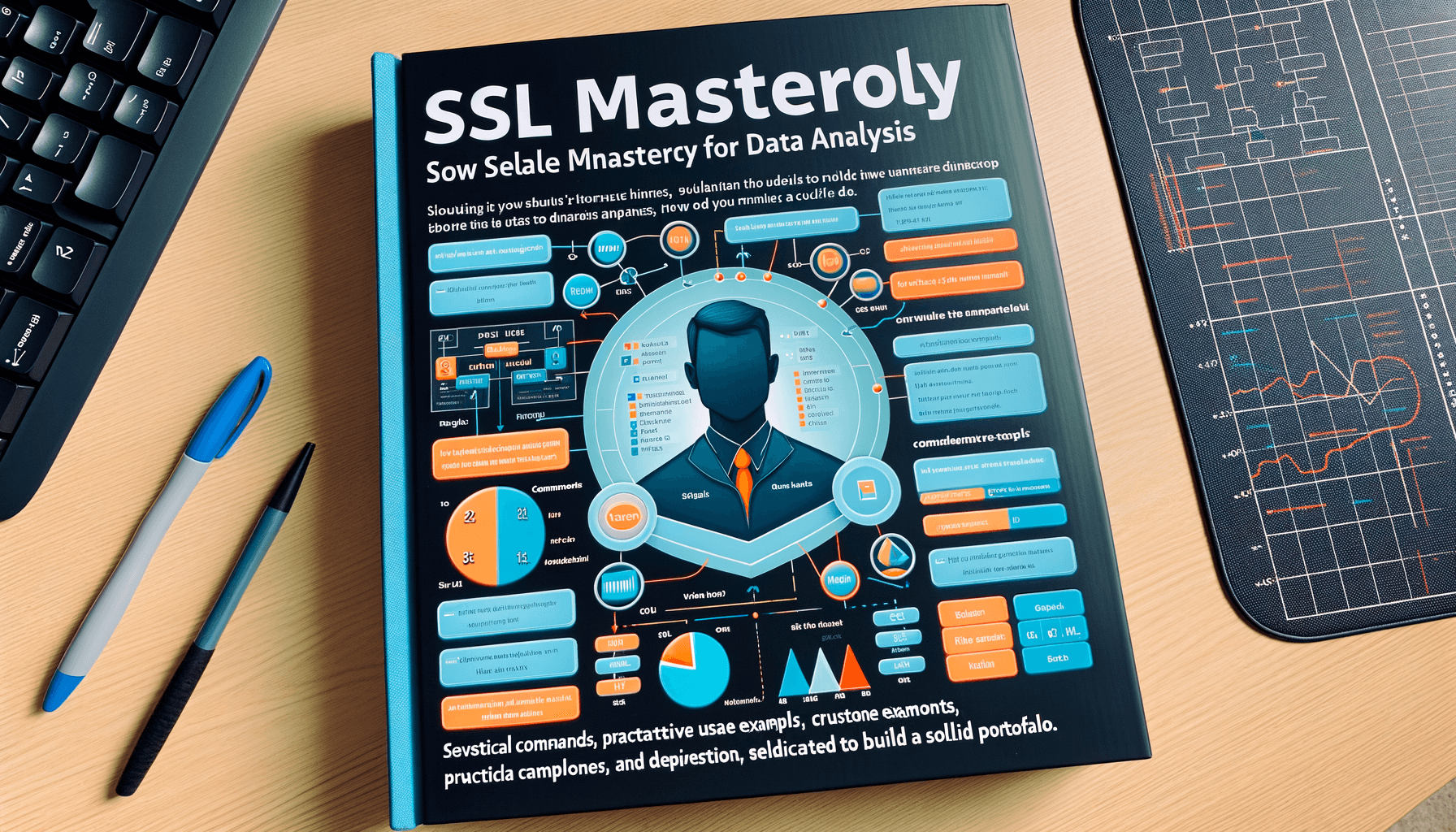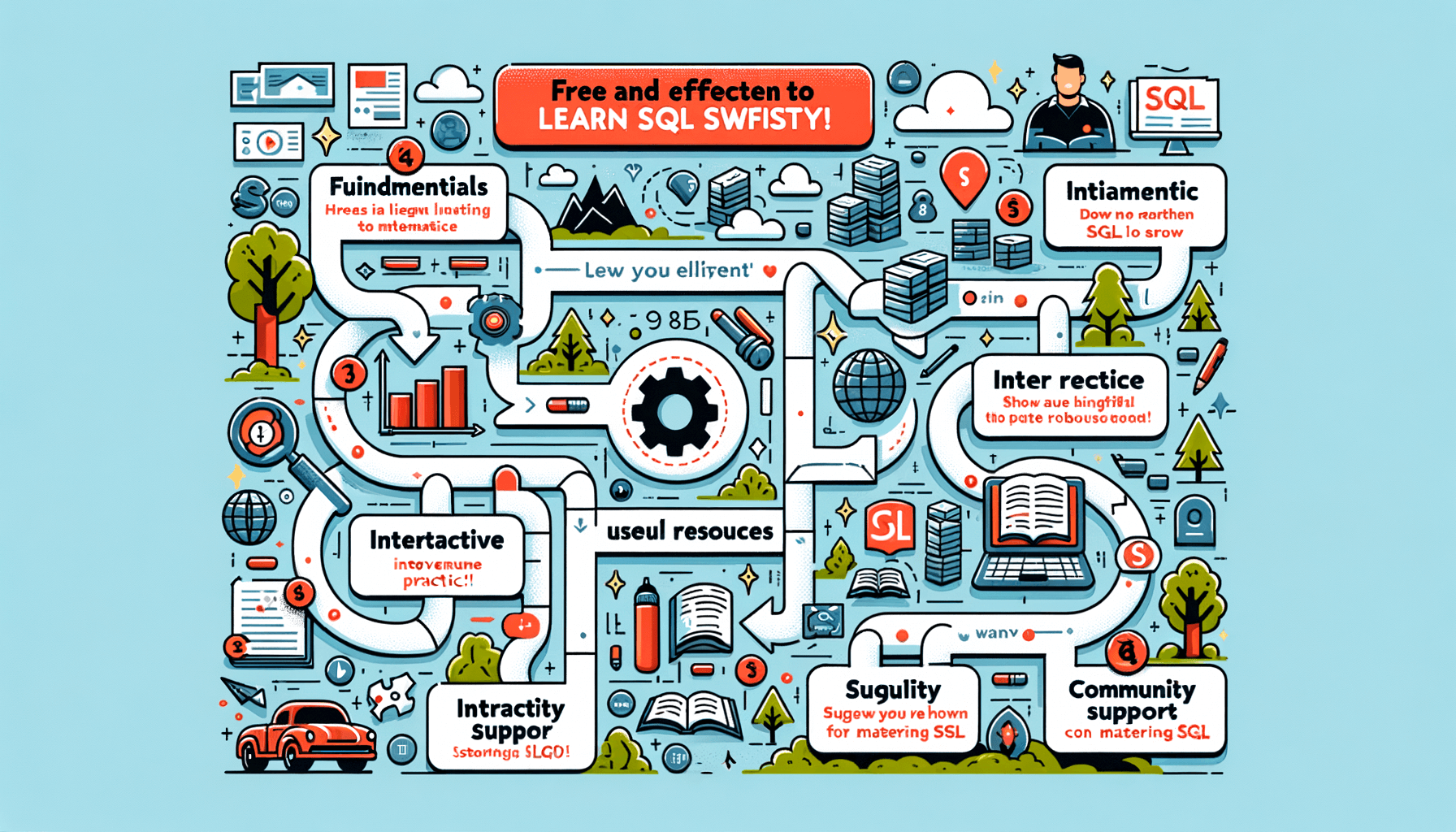A big variety of articles and resources

Mastering SQL for Database Administrators: Essential Skills and Tips
 Sia Author and Instructor
Learn SQL
Sia Author and Instructor
Learn SQL
8 minute read
Understanding SQL Server Architecture
To effectively manage SQL Server, understanding its architecture is crucial. This includes the SQL Server Database Engine, which processes SQL queries and controls data storage, as well as the buffer cache, transaction log architecture, and SQL Server’s execution model.
Components and Structure
SQL Server's architecture is built on a robust framework designed to handle large volumes of data efficiently. The core components include the Database Engine, SQL OS, and storage engine, which work together to process and manage data.
Data Storage Mechanisms
SQL Server utilizes a variety of data storage mechanisms to ensure data integrity and quick access. These include pages, extents, and filegroups. Understanding how SQL Server stores data helps in optimizing database performance and storage.
Indexing Strategies
Effective indexing is key to improving query performance. SQL Server offers several indexing strategies, including clustered, non-clustered, and columnstore indexes. Choosing the right index can significantly reduce query response times and enhance the overall performance of the database.
Advanced Query Techniques
Mastering advanced query techniques is essential for any database administrator looking to enhance the performance and efficiency of their SQL Server operations. These techniques not only improve data retrieval but also ensure that your queries are both powerful and cost-effective.
Writing Efficient SQL Queries
To write efficient SQL queries, it's crucial to understand the underlying structure of your data and how SQL Server processes queries. Optimizing query performance involves careful selection of indexes, use of query hints, and understanding the execution plans. Regular updates to statistics and index maintenance can dramatically improve query responsiveness.
Using Joins and Subqueries
Joins and subqueries are fundamental in performing complex data manipulations involving multiple tables. A well-crafted join can significantly reduce the amount of data processed, while subqueries allow for more dynamic data retrieval. Mastering these tools is key to unlocking the full potential of SQL Server.
Implementing Aggregations and Groupings
Aggregations and groupings are powerful tools for summarizing data, allowing for quick insights and reporting. Effective use of these features can transform raw data into meaningful information, crucial for decision-making processes. Techniques such as group by and having clauses are instrumental in refining the data aggregation process.
Security Best Practices for SQL Server
User Authentication and Authorization
Ensuring robust user authentication and authorization mechanisms is crucial for safeguarding SQL Server environments. Implementing role-based access control (RBAC) and adhering to the principle of least privilege can significantly reduce potential security breaches. Regular audits of user activities and permissions adjustments are recommended to maintain a secure database environment.
Data Encryption Methods
SQL Server provides several encryption methods to protect sensitive data. Techniques such as Transparent Data Encryption (TDE) and Always Encrypted are essential for securing data at rest and in transit. It's important to manage encryption keys securely and to implement regular updates to encryption protocols to prevent unauthorized data access.
Audit and Compliance Tracking
Tracking and auditing compliance is vital for any SQL Server database to ensure adherence to regulatory standards. Utilizing tools like SQL Server Audit can help in capturing and analyzing data about database operations, which aids in identifying and mitigating potential security risks. Effective audit strategies should include both real-time monitoring and historical data analysis to provide a comprehensive overview of security-related activities.
Performance Tuning and Optimization
Query Performance Analysis
Identifying and resolving performance bottlenecks is crucial for maintaining an efficient SQL Server environment. By analyzing execution plans and monitoring server performance, DBAs can pinpoint areas that need optimization. Utilizing tools like Query Store and Dynamic Management Views (DMVs) can provide deep insights into query performance and help in making informed decisions.
Database Tuning Advisor Usage
The Database Tuning Advisor (DTA) is an invaluable tool for recommending index and partitioning strategies. By analyzing your workload, DTA provides tailored recommendations that can significantly enhance database performance. Here are the steps to effectively use DTA:
- Capture a workload in SQL Server Profiler.
- Analyze the workload using DTA.
- Review the recommendations and apply suitable changes.
Effective Use of Caching
Caching strategies play a pivotal role in optimizing SQL Server performance. Implementing proper caching can drastically reduce database load and improve query response times. Key areas to focus on include buffer pool extension, page life expectancy, and plan caching. Effective caching ensures that data retrieval is fast and resource-efficient, leading to better overall system performance.
Automating SQL Server Tasks
Scripting with SQLCMD and PowerShell
Automating administrative tasks is crucial for efficient database management. Utilizing SQLCMD and PowerShell, DBAs can script complex operations, ensuring consistency and reducing manual errors. This approach not only saves time but also enhances the reliability of regular database maintenance tasks.
Scheduling Jobs and Alerts
Effective task management in SQL Server involves the use of SQL Server Agent to schedule jobs and configure alerts. This automation helps in maintaining database health and performance, allowing DBAs to focus on more strategic activities. Scheduled tasks can include backups, report generation, and database integrity checks.
Automating Backup and Recovery
To ensure data safety, automating backup and recovery processes is essential. By setting up scheduled backups and configuring recovery models, DBAs can protect data against loss and minimize downtime during disasters. This proactive measure is a key component of a robust database management strategy.
Monitoring and Troubleshooting SQL Server
Real-time Monitoring Tools
In SQL Server, real-time monitoring tools are essential for maintaining optimal performance and reliability. Utilizing tools like Query Store, Extended Events, and Dynamic Management Views (DMVs) allows database administrators (DBAs) to proactively detect and address performance issues. These tools provide immediate feedback and detailed insights into the health of the database, making them indispensable for high-stakes environments.
Identifying and Resolving Performance Bottlenecks
Efficient management of SQL Server involves identifying and resolving performance bottlenecks. Techniques such as query optimization and capacity planning are crucial. DBAs can leverage automated tools and detailed logs to pinpoint the exact causes of slowdowns, ensuring that the database operates at its best capacity.
Log Analysis and Error Handling
Handling logs and errors effectively is vital for troubleshooting and ensuring the database's integrity. Blockquote: > Proper log analysis can prevent minor issues from escalating into major disruptions. By setting up comprehensive error handling and using tools like the SQL Server Agent, DBAs can maintain a robust environment and minimize downtime.
SQL Server High Availability Solutions
Ensuring the continuous operation and accessibility of databases is critical for businesses. SQL Server provides several high availability (HA) solutions to maintain service continuity even during unplanned outages. Below are the key strategies:
Implementing Always On Availability Groups
Always On Availability Groups offer a high-level of data protection and availability for SQL Server environments. This feature allows multiple replicas of the database to be hosted across different servers, ensuring that in the event of a server failure, other replicas can quickly take over with minimal disruption. Key benefits include automatic failover and flexible read routing, which enhances application availability and read scalability.
Setting Up Failover Clustering
Failover Clustering is a strategy used to increase the availability of server instances. SQL Server uses Windows Server Failover Clustering (WSFC) technology to provide local high availability through redundancy. If one of the clustered servers fails, another server in the cluster automatically takes over, ensuring that the database services remain uninterrupted.
Managing Disaster Recovery
Disaster recovery is about preparing for and recovering from a disaster that causes the loss of a data center. SQL Server's disaster recovery solutions are designed to restore operations quickly with minimal data loss. Effective disaster recovery planning involves regular backups, detailed recovery procedures, and periodic testing of the recovery process to ensure business continuity.
Note: It's crucial to regularly test and update your high availability and disaster recovery plans to adapt to new challenges and ensure they are effective when needed.
Conclusion
In conclusion, mastering SQL for database administrators is an ongoing journey that requires a blend of technical skills, strategic thinking, and continuous learning. Throughout this article, we have explored essential skills and practical tips that are crucial for any DBA aiming to excel in managing SQL databases. By embracing these practices, from optimizing queries to ensuring security and high availability, you can significantly enhance your proficiency and reliability as a SQL Server DBA. Remember, the path to mastery is not just about understanding the tools but also about applying them effectively to meet the evolving demands of database management.
Frequently Asked Questions
What is SQL Server and why is it important for DBAs?
SQL Server is a relational database management system developed by Microsoft. It's essential for DBAs because it offers a robust platform for managing, securing, and optimizing databases, ensuring data integrity and performance.
What are the key components of SQL Server architecture?
The key components include the Database Engine, which processes and stores data, SQL OS, which handles scheduling and resource management, and the SQL Server Agent, which automates tasks.
How can SQL Server performance be optimized?
Performance can be optimized through proper indexing, query optimization, using Database Tuning Advisor for recommendations, and effective caching strategies.
What security features does SQL Server provide?
SQL Server provides comprehensive security features including user authentication and authorization, data encryption, and tools for audit and compliance tracking.
How does SQL Server handle data backup and disaster recovery?
SQL Server handles data backup and disaster recovery through automated backup solutions, log shipping, database mirroring, and features like Always On Availability Groups for high availability.
What are advanced query techniques in SQL Server?
Advanced query techniques include using complex joins, subqueries, aggregations, and groupings to manage large datasets and perform sophisticated data analysis.
Related Articles

10 Effective Tips on How to Learn SQL Online
9 minute read

A Comprehensive Guide to Learn SQL for Analysts
8 minute read


